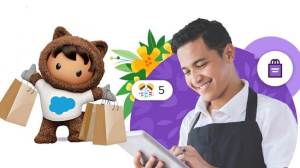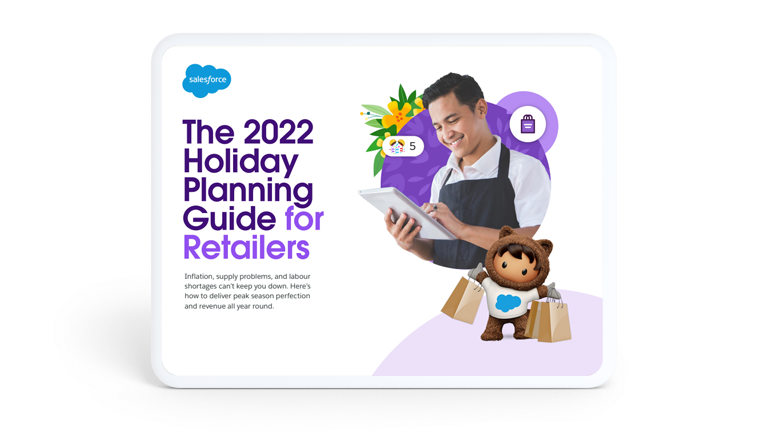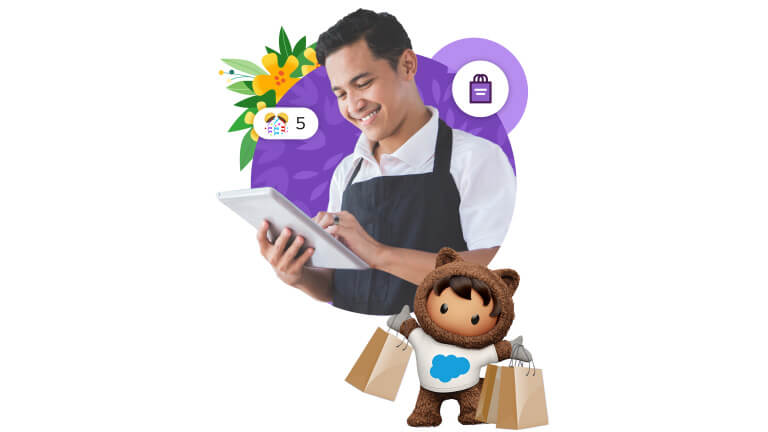Shoppers Are Budget Conscious This Peak Season — Use Data To Turn Holiday Browsing into Buying



Did you know 73% of customers expect companies to understand their unique needs and expectations – a 7-point rise in just two years? Keep those numbers in mind this holiday, retailers, because they could affect your revenue and growth.
Would you be surprised to learn that companies with a strong data strategy grow revenue up to 2.9 times faster than companies without one? Or that 73% of customers expect companies to understand their unique needs and expectations – a 7-point rise in just two years? Keep those numbers in mind this holiday, retailers, because they could affect your revenue and growth.
Creating personalised experiences based on collected customer data, also known as first-party data, is an increasingly critical part of retail data strategy. Despite this, only 32% of retail executives say they can turn profile information, purchase history, and service interactions into tailored experiences that make shoppers feel like VIPs. To stay profitable during this holiday season’s stormy economy, retailers must inspire budget-conscious customers to shop. And to do that, they need to prove they understand their customers’ needs and expectations.
Here’s how to acquire and engage customers this holiday shopping season.
Make the holidays happier for shoppers
Check out the 2022 Holiday Planning Guide for Retailers for tips that spread joy all year long.

Use customer data to personalise every interaction
First-party data helps you tailor offers and messages to your customers’ specific interests. The payoff is huge: 78% of consumers say personalised email and other messages make them more likely to repurchase in the future. However, simply accumulating huge quantities of data isn’t enough. You also need to know what to collect, when to collect it, and how to use it. The challenge is to not drive customers away by asking for everything at once.
Here’s how to level up your holiday retail data strategy:
Avoid intrusive demands
During the peak shopping period, shoppers’ patience tends to wear thin. Their interest in completing a long customer profile is probably slim to none, so be strategic about what you ask. Focus on data collection that will enable you to follow up with them after the purchase to learn more. Use a multi-pronged approach that balances frequency with relevancy, and stay away from batch-and-blast and generic communication when possible. The more you know about your customers, the more opportunity you have to tailor your messaging to inspire participation. With a staged approach, you can collect more valuable information, like product preferences, later as you build trust.
Keep your loyalty program holiday-ready
Not only are loyalty programs an effective way to gather zero- and first-party data, but their members are often your most valuable customers. But with consumers likely to shop less and from fewer retailers this holiday season, your job is to make sure your members think of you first when they’re making shopping lists. How? By ensuring your loyalty program delivers the best value exchange possible.
While traditional rewards-for-transactions arrangements will remain important as consumers get more budget-conscious, don’t overlook the intrinsic value of the VIP experience. That’s especially important for millennial and Gen Z shoppers who value exclusive access to limited-edition products and experiences nearly two times more than Gen Xers and baby boomers. So, from priority sale access to complimentary gift wrap, ensure your members feel the data-for-rewards exchange is worth the effort.
Connect data across the full customer lifecycle
Busy holiday shoppers don’t have time to waste. They don’t want to repeat themselves on the phone, explain an online promotion to a store associate, or make an extra trip to the post office because they can’t return a purchase in person. The bottom line? Your customers expect you to unite physical and digital interactions. By elevating data from sales, service, marketing, and commerce to a shared customer data platform, you’ll gain the 360-degree view you need to ensure every interaction stays personalised, consistent, and on-brand.
Segment audience data to automate relevant communications
Holiday shoppers are inundated with emails, texts, app notifications, and social media advertising. Your retail data strategy needs to stand out from the crowd and capture their attention with intelligent messaging that’s tailored to their specific needs and interests. But how?
By organising your customer data based on shared attributes, you can target the audiences most likely to respond to customised messaging. For example, imagine you’ve created a segment of customers in a certain region who are on the waiting list for gaming equipment. You’ve recently restocked that region’s store shelves with popular consoles, headsets, and controllers. Segmentation and automated messaging enable you to alert interested customers that the items they want are back in stock. But even better, you can also send communications to lookalike audiences who have purchased gaming equipment from you in the past — and that’s the kind of personalised experience that drives revenue.
Make online experiences intuitive, wallet-friendly, and fast
To grow margin in a challenging economy, you need to do more than tailor communications to customer preferences. Your retail data strategy needs to capture the attention of your first-time shoppers at the right moments and then make it easy for them to buy. Use data from existing customers to create:
- Intelligent product displays. Offer relevant recommendations on the pages where customers are shopping, like athletic socks alongside sneakers. But don’t display just anything. Deliver a good customer experience by ensuring the products are in stock (or at least available for on-time holiday delivery).
- Money-saving promotional bundles. Budget-conscious holiday shoppers don’t want to waste money or time. Reduce taps to discovery and increase average order volume by combining closely related products into purse-friendly bundles. For example, offer a treadmill alongside a fitness tracker, workout wear, and hand weights.
- Personalised (and fast) checkout. With 71% of traffic coming from mobile devices in the second quarter, it’s never been more important to optimise commerce experiences for smaller screens. Invite new customers to create a profile with their payment preference and enable “buy it now” on mobile product pages to ensure they can breeze through checkout.
What’s next for your retail data strategy?
A difficult economy and shifting consumer sentiment are creating yet another year of unprecedented challenges in retail. You’ll need to use every tool you have to acquire new customers and keep loyal shoppers coming back for more.
As trusted advisors to brands and retailers, we’ve been working on recession and holiday strategies, which are now inextricably linked,” said Bernardine Wu, executive managing director of OSF Digital Strategy. “With the lingering pandemic and market uncertainty quickly causing hiring freezes, lost confidence in delivery times, tightening of the [profit-and-loss statement], and many new challenges, we think it’s even more critical to have a detailed combat plan that shores up weaknesses and doubles down on opportunities.”
With the right retail data strategy and streamlined digital experiences that address busy holiday shoppers’ needs, you can keep your customers happy from Prime Day – to Black Friday and beyond.
Our Top 2022 Peak Season Predictions
Find out what’s new and how to prep for holiday shoppers in our latest webinar.























